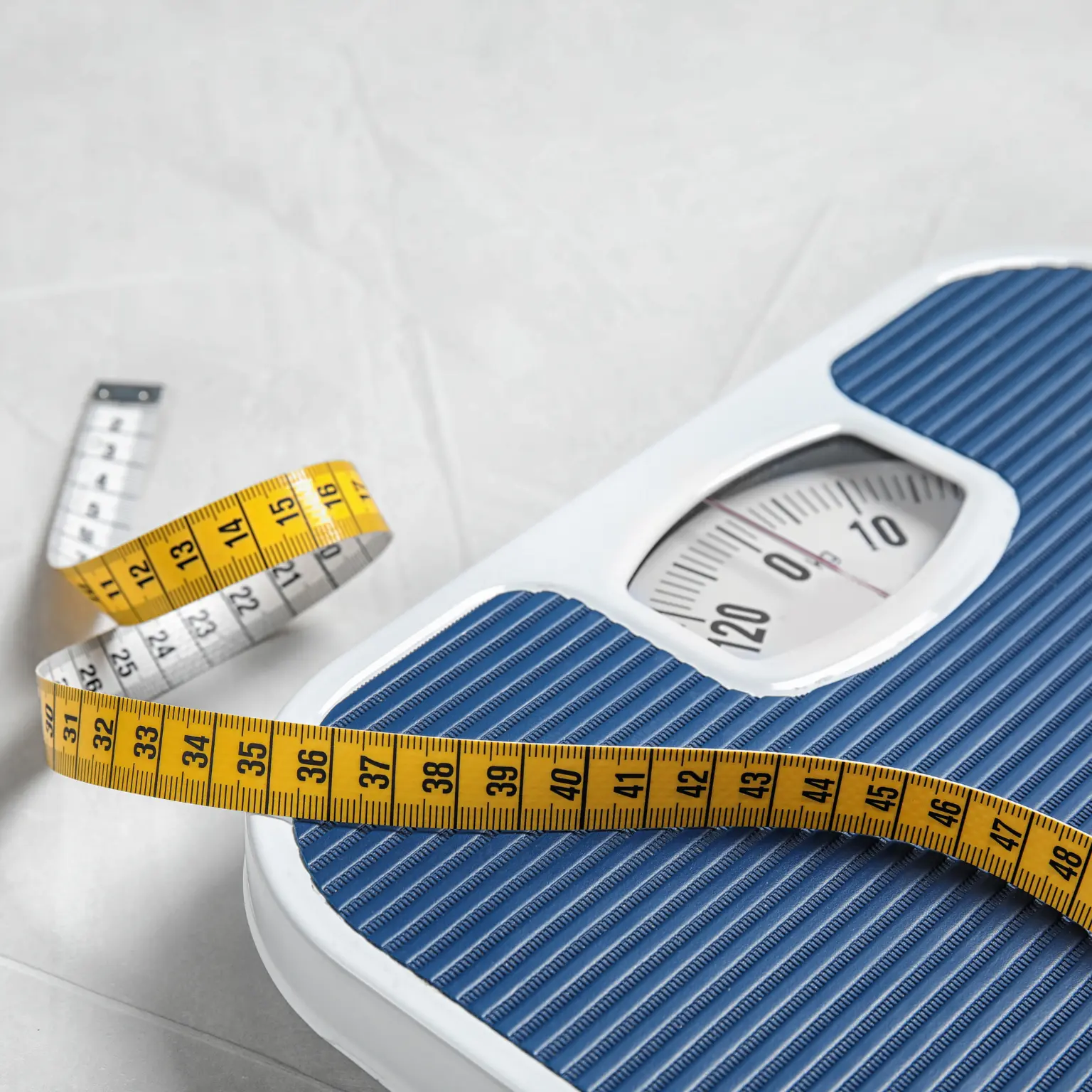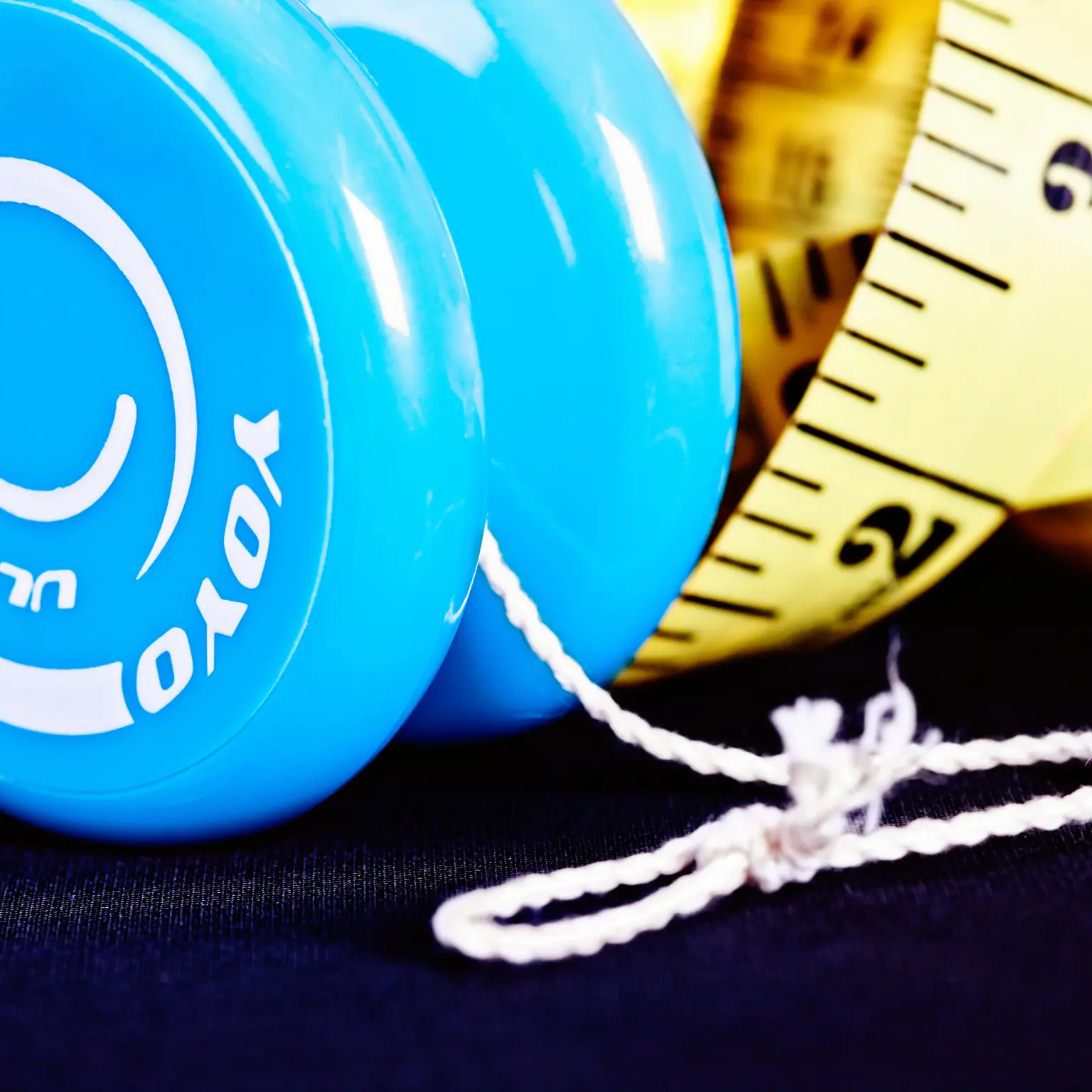The Food Diary: Your Secret Weapon for Weight Loss

In the quest for weight loss, many tools and tricks promise results. Yet, one often-overlooked strategy stands out for its simplicity and effectiveness: the humble food diary. Think of it as your personal nutrition detective, uncovering the secrets behind your eating habits and paving the way for healthier choices.
Healthy Stride Wellness is here to delve into how this unassuming tool can transform your relationship with food and propel you toward your weight loss goals.
But what is a food diary? It’s simply a record of what you eat and drink throughout the day. While it may sound mundane, the insights it provides can be truly eye-opening. By diligently tracking your meals, snacks, and beverages, you gain a deeper understanding of your patterns, triggers, and overall nutritional intake. This awareness becomes a powerful catalyst for change, empowering you to make informed decisions about your diet and ultimately achieve lasting weight loss.
Table of Contents
Key Takeaways
- A food diary is a powerful tool that can help you understand your eating habits and make healthier choices.
- Maintain a successful food diary by choosing the right format, tracking essential details like food consumed, portion sizes, time of day, mood, and hunger levels, and consistently logging your intake.
- The versatility of the food diary extends beyond weight loss and can be tailored for specific goals like managing health conditions or improving athletic performance.
Why a Food Diary is a Game-Changer for Weight Loss?
Keeping a food diary may seem like a tedious chore, but it can be a game-changer for weight loss. It’s more than just jotting down what you eat; it’s about unlocking a deeper understanding of your relationship with food and harnessing that knowledge to make positive changes.
Increased Awareness of Eating Habits
Have you ever finished a bag of chips without realizing it? Or mindlessly munched on snacks while watching TV? We all have those moments of autopilot eating, where we consume food without paying attention to our bodies signals of hunger or fullness. A food diary shines a light on these unconscious habits, revealing patterns you may not have been aware of.
By meticulously recording your food intake, you start to notice trends. Perhaps you tend to overeat when you’re stressed or bored. Maybe you reach for sugary treats when you’re feeling down. This newfound awareness is the first step towards making conscious choices about your food. You can then develop strategies to address these patterns, such as finding alternative ways to cope with stress or seeking healthier sources of comfort.
Identifying Triggers and Obstacles
A food diary not only reveals your eating habits but also helps you identify the triggers and obstacles that hinder your weight loss efforts. Triggers can be emotional (stress, anxiety, sadness) or situational (social gatherings, watching TV). By recognizing what triggers you to overeat or make unhealthy choices, you can create a plan to manage those triggers and avoid falling into old patterns.
Obstacles can include a lack of time for meal preparation, limited access to healthy foods, or social pressures. Once you pinpoint these obstacles, you can brainstorm solutions to overcome them. For instance, you might try meal prepping on weekends, exploring healthy takeout options, or communicating your dietary needs to friends and family.
Making Informed Food Choices
A food diary empowers you to make informed decisions about your food choices. By tracking the nutritional information of the foods you eat, you can see how your diet aligns with your weight loss goals. Are you consuming too many calories, not enough protein, or an excess of sugar? A food diary provides a clear picture of your intake, allowing you to identify areas for improvement.
Armed with this knowledge, you can start to make conscious choices that support your weight loss journey. You might swap sugary drinks for water, choose lean protein sources over processed meats, or opt for whole grains instead of refined carbohydrates. By making small, incremental changes based on the information in your food diary, you can create a healthier eating pattern that fuels your body and helps you shed those extra pounds.
Promoting Mindful Eating
In our fast-paced world, meals often become a rushed affair. We scarf down food while multitasking, scrolling through our phones, or watching TV. This mindless eating can lead to overeating, as we fail to tune into our body’s signals of hunger and fullness. A food diary encourages a shift towards mindful eating, a practice that involves paying full attention to the experience of eating.
When you keep a food diary, you’re naturally inclined to slow down and savor each bite. You become more aware of the flavors, textures, and aromas of your food. This heightened awareness not only enhances your enjoyment of the meal but also helps you recognize when you’re truly satisfied. As a result, you’re less likely to overeat and more likely to make healthier choices.
Mindful eating also involves paying attention to your emotions and thoughts around food. Are you eating because you’re truly hungry, or are you reaching for food out of boredom, stress, or sadness? A food diary can help you identify these emotional triggers and develop healthier coping mechanisms.
By promoting mindful eating, a food diary can transform your relationship with food from one of mindless consumption to one of conscious nourishment. You’ll learn to listen to your body’s signals, make choices that align with your goals, and ultimately enjoy a more satisfying and fulfilling eating experience.
Holding Yourself Accountable
A food diary serves as a mirror, reflecting your eating habits back to you. It’s a tool for self-reflection and accountability. When you know you’ll have to record everything you eat, you’re more likely to think twice before indulging in that extra slice of cake or reaching for a sugary drink.
The act of tracking your food intake creates a sense of responsibility and commitment to your goals. It’s a tangible reminder of your choices and their impact on your weight loss journey. This accountability can be a powerful motivator, helping you stay on track and make healthier choices.
Additionally, a food diary allows you to track your progress over time. You can see how your eating habits have changed, celebrate your successes, and identify areas where you need to make adjustments. This positive reinforcement can boost your motivation and keep you moving forward, even when faced with challenges or setbacks.
How to Start and Maintain a Food Diary Effectively?
Ready to unleash the power of food diaries? Let’s dive into the practical steps involved in starting and maintaining this valuable tool for your weight loss journey.
Choosing Your Food Diary Format
The beauty of a food diary is its adaptability. You have several options for tracking your food intake:
- Traditional Notebook: A simple notebook and pen are all you need for a classic food diary. This method allows for free-form journaling and can be easily customized to your preferences.
- Food Diary App: Many apps are designed specifically for food tracking. These apps often have built-in databases of foods and their nutritional information, making it easy to log your meals and snacks. Some apps even offer additional features like barcode scanning and meal planning tools.
- Online Platform: Several websites and online platforms offer food diary tools. These platforms often have social features that allow you to connect with other users, share your progress, and get support.
The best format for you depends on your personal preferences and lifestyle. If you prefer a simple, low-tech approach, a notebook might be the best choice. If you’re tech-savvy and want a more streamlined experience, a food diary app or online platform might be more appealing.
What to Track?
To maximize the benefits of your food diary, it’s important to track the following details:
- Food and Drink Consumed: Record everything you eat and drink, including meals, snacks, beverages, and even small bites or tastes. Be as specific as possible, noting the type of food, brand names, and preparation methods.
- Portion Size: Accurately estimating portion sizes is crucial for tracking your calorie and nutrient intake. Use measuring cups, a food scale, or your hand as a guide.
- Time of Day: Note when you ate or drank each item. This can help you identify patterns in your eating habits, such as late-night snacking or emotional eating.
- Mood and Hunger Level: Record how you were feeling before, during, and after eating. Were you hungry, stressed, bored, or happy? This information can help you understand the emotional and situational triggers that influence your food choices.
You can also track additional details based on your specific goals. For example, if you’re trying to increase your protein intake, you could track the amount of protein in each meal or snack. If you’re focusing on hydration, you could track your water intake throughout the day.
Tips for Consistent Tracking
Consistency is key when it comes to reaping the full benefits of a food diary. The more accurate and complete your records, the more valuable insights you’ll gain. Here are some tips for consistent tracking:
- Be Honest and Accurate: This is the most crucial aspect of food journaling. Record everything you eat and drink, even those “little bites” that seem insignificant. Be as specific as possible about portion sizes and ingredients. Remember, you’re not being judged; you’re simply gathering information to help yourself.
- Track Immediately After Eating: Don’t rely on your memory to log your meals later in the day. Track your food and drink once you consume them. This ensures accuracy and prevents you from forgetting anything.
- Use Measuring Tools or Your Hand as a Guide: Invest in measuring cups and spoons to accurately estimate portion sizes. If you’re eating out or don’t have measuring tools handy, use your hand as a guide. Your fist is roughly the size of a cup, your palm is about the size of a 3-ounce serving of meat, and your thumb is about the size of a tablespoon of oil or peanut butter.
- Set Reminders: If you’re prone to forgetting, set reminders on your phone or use a habit-tracking app to prompt you to log your meals and snacks.
- Make It a Habit: Integrate food tracking into your daily routine. For example, you could log your breakfast as you’re eating it, your lunch during your break, and your dinner while you’re cooking.
Remember, food journaling doesn’t have to be perfect. If you forget to track a meal or misjudge a portion size, don’t beat yourself up. Just do your best to be as consistent and accurate as possible.
Analyzing Your Food Diary Data
Your food diary is not just a list of what you ate. It’s a treasure trove of data that can reveal patterns, trends, and areas for improvement. By analyzing your food diary, you can gain valuable insights into your eating habits and make informed decisions about your diet.
Here’s how to analyze your food diary data:
- Look for Patterns: Do you tend to overeat on certain days of the week or at certain times of the day? Do you notice any connections between your emotions and your food choices? By identifying patterns, you can start to develop strategies to address them.
- Track Your Calorie and Nutrient Intake: Many food diary apps or online platforms automatically calculate your calorie and nutrient intake based on the foods you log. This information can help you see how your diet aligns with your weight loss goals.
- Identify Areas for Improvement: Are you eating too many processed foods? Not enough fruits and vegetables? Too much sugar or unhealthy fats? Once you identify areas where you can make changes, you can set specific goals for improvement.
- Set Realistic Goals: Based on your food diary data, set realistic goals for yourself. For example, you might aim to reduce your calorie intake by 200 calories per day or increase your vegetable intake to five servings per day.
- Track Your Progress: As you make changes to your diet, continue to track your food intake and monitor your progress. This will help you see how your efforts are paying off and make further adjustments as needed.
By analyzing your food diary data, you’ll gain a deeper understanding of your eating habits and be better equipped to make the changes necessary to achieve your weight loss goals.
Overcoming Challenges and Staying Motivated
Even with the best intentions, maintaining a food diary can present challenges. Life gets busy, motivation wanes, and the initial excitement may wear off. However, with a few strategies, you can overcome these obstacles and make food journaling a sustainable habit.
- Start Small: If the idea of tracking every morsel feels overwhelming, start by logging just one meal a day. Gradually increase the frequency as you get more comfortable with the process.
- Set Realistic Expectations: Don’t expect perfection. There will be days when you forget to track or misjudge a portion size. Don’t let this discourage you. Just pick up where you left off and continue tracking.
- Use Visual Cues: Place your food diary in a visible spot as a reminder to log your meals and snacks. You can also use sticky notes or set alarms on your phone as visual cues.
- Find a Tracking Method That Works for You: Experiment with different formats (notebook, app, online platform) until you find one that you enjoy using and that fits seamlessly into your lifestyle.
- Reward Yourself: Celebrate your milestones and achievements with non-food rewards. For example, treat yourself to a new book, a relaxing bath, or a fun activity after a week of consistent tracking.
- Focus on the Benefits: Remind yourself of the benefits of food journaling, such as increased awareness, healthier choices, and progress toward your weight loss goals.
- Seek Support: If you’re struggling to stay motivated, reach out to a friend, family member, or online support group. Sharing your challenges and successes with others can be a powerful source of encouragement.
Remember, food journaling is a tool, not a punishment. It’s a way to empower yourself with knowledge and make conscious choices about your food. By overcoming challenges and staying motivated, you can transform food journaling into a lifelong habit that supports your health and well-being.
Food Diary Variations for Specific Goals
The beauty of a food diary is its versatility. It can be tailored to different goals, not just weight loss. Here are a few variations you can explore depending on your specific needs:
Weight Loss Food Diary
If shedding pounds is your primary goal, a weight loss food diary focuses on tracking elements crucial for creating a calorie deficit. Here’s what you should include:
- Calories: Log the calorie count for each food and drink you consume. You can find this information on food labels, nutrition databases, or using a food tracking app.
- Macronutrients: Track your intake of carbohydrates, protein, and fat. This helps you understand the composition of your diet and ensure you’re getting a balanced mix of nutrients.
- Fiber: Fiber plays a vital role in weight loss by promoting feelings of fullness and aiding digestion. Note the fiber content of your meals and snacks.
- Weight and Measurements: Regularly record your weight and body measurements to monitor your progress and make adjustments to your calorie goals if necessary.
- Exercise: If you’re incorporating physical activity into your weight loss plan, track your workouts in your food diary. This can help you see how exercise affects your calorie expenditure and adjust your food intake accordingly.
By tracking these key elements, you can create a calorie deficit that aligns with your weight loss goals and monitor your progress over time.
Food Diary for Managing Health Conditions
If you have a health condition like diabetes, heart disease, or food allergies, a food diary can be a valuable tool for managing your condition. In this case, you’ll want to focus on tracking specific nutrients or foods that are relevant to your condition.
For example, if you have diabetes, you might track your carbohydrate intake to manage your blood sugar levels. If you have heart disease, you might track your sodium and saturated fat intake. If you have food allergies, you might track your exposure to allergens to identify triggers and avoid reactions.
It’s always a good idea to consult with your healthcare provider or a registered dietitian to get personalized guidance on what to track in your food diary and how to interpret the data.
Food Diary for Improving Athletic Performance
If you’re an athlete or someone who engages in regular physical activity, a food diary can help you optimize your nutrient intake to support your performance and recovery. In this case, you’ll want to focus on tracking macronutrients, micronutrients, and the timing of your meals around your workouts.
- Macronutrients: Track your intake of carbohydrates, protein, and fat to ensure you’re getting enough energy to fuel your workouts and enough protein to repair and rebuild your muscles.
- Micronutrients: Pay attention to your intake of vitamins and minerals, as these nutrients are essential for energy production, muscle function, and overall health.
- Meal Timing: Record when you eat your meals and snacks relative to your workouts. Eating the right foods at the right times can optimize your energy levels, enhance your performance, and aid in recovery.
By tracking these elements, you can fine-tune your diet to meet your specific needs as an athlete and maximize your potential on the field or in the gym.
Real-Life Success Stories: Food Diaries in Action
Real people, real results. Let’s explore how food diaries have been instrumental in transforming lives and achieving diverse health and wellness goals:
Case Study 1: Sarah’s Weight Loss Journey
Sarah, a 35-year-old mother of two, struggled with her weight for years. She tried numerous diets and exercise plans, but nothing seemed to stick. Feeling discouraged, she decided to try food journaling. To her surprise, Sarah discovered that she was consuming far more calories than she realized, mainly through mindless snacking and sugary drinks. Armed with this knowledge, she made gradual changes to her diet, swapped unhealthy snacks for fruits and vegetables, and started tracking her water intake.
Over time, Sarah’s food diary became her trusted companion, guiding her towards healthier choices and keeping her motivated. She started losing weight steadily and, more importantly, felt more in control of her eating habits. Today, Sarah has reached her goal weight and maintains a healthy lifestyle thanks to the insights gained from her food diary.
Case Study 2: Mark’s Journey with Diabetes Management
Mark, a 50-year-old man with type 2 diabetes, struggled to manage his blood sugar levels. He followed his doctor’s advice and took his medication, but still experienced fluctuations in his blood sugar. His doctor suggested keeping a food diary to track his carbohydrate intake and its impact on his blood sugar.
Initially skeptical, Mark began diligently logging his meals and snacks, noting the type and amount of carbohydrates he consumed. He also recorded his blood sugar levels before and after each meal. Over time, he noticed patterns between his food choices and his blood sugar readings. With this information, he was able to adjust his diet, making healthier carbohydrate choices and spreading his intake throughout the day. As a result, Mark’s blood sugar levels became more stable, and he felt more in control of his diabetes.
Case Study 3: Emily’s Quest for Peak Athletic Performance
Emily, a 28-year-old marathon runner, was constantly striving to improve her performance. She knew that nutrition played a crucial role in fueling her workouts and aiding her recovery. To optimize her diet, Emily started keeping a food diary, tracking her macronutrient intake, meal timing, and hydration levels.
Through her food diary, Emily discovered that she wasn’t consuming enough carbohydrates to fuel her long runs, and her protein intake was insufficient for muscle recovery. She also noticed that she wasn’t drinking enough water throughout the day, which was impacting her energy levels. By adjusting her diet based on these insights, Emily was able to increase her energy levels, improve her recovery, and ultimately achieve a personal best in her next marathon.
In The End
The food diary, often underestimated, is a powerful ally in your weight loss journey. It’s more than a simple log of meals; it’s a tool for self-discovery, behavior change, and ultimately, a healthier, happier you. By diligently recording your food intake, you gain valuable insights into your eating habits, identify triggers and obstacles, and make informed choices that align with your goals.
A food diary promotes mindful eating, encouraging you to slow down, savor each bite, and listen to your body’s cues. It holds you accountable, motivates you to stay on track, and celebrates your progress. Whether your goal is weight loss, managing a health condition, or improving athletic performance, a food diary can be tailored to meet your specific needs.
Healthy Stride Wellness believes in the transformative power of the food diary. It’s a simple yet effective tool that can empower you to take control of your health and well-being. We encourage you to embrace this secret weapon and experience the positive impact it can have on your life.
Are you ready to unlock the secrets of your eating habits and embark on a journey towards a healthier you? Start your food diary today and discover the power of this simple yet transformative tool.
For additional support, guidance, and inspiration on your weight loss journey, be sure to explore other informative articles on Healthy Stride Wellness. We offer a wealth of resources on nutrition, fitness, and mindset to help you achieve your goals and live your best life.
Remember, the food diary is just the beginning. With dedication, perseverance, and the right tools, you can achieve lasting weight loss success and transform your relationship with food.
FAQs: Your Food Diary Questions Answered
A food diary is a simple yet powerful tool, but it’s natural to have questions about how to use it effectively. Let’s address some common queries:
How long should I keep a food diary?
There’s no one-size-fits-all answer. Some people find it helpful to track their food intake for a few weeks to identify patterns and make initial changes. Others continue journaling for months or even years to maintain healthy habits and monitor their progress. Ultimately, the duration depends on your individual goals and preferences.
Is it okay to estimate portion sizes?
Yes, it’s perfectly fine to estimate portion sizes, especially when you’re eating out or don’t have measuring tools handy. Use visual cues, such as comparing your portion to the size of your fist or palm, or refer to online resources that provide visual guides for estimating portion sizes.
What if I forget to track a meal?
Don’t stress if you forget to track a meal occasionally. Just estimate what you ate and log it as best you can. The goal is to be as accurate as possible most of the time, not to achieve perfection.
Can I use a food diary if I’m not trying to lose weight?
Absolutely! Food diaries are not just for weight loss. They can be used to improve your overall health, manage medical conditions, enhance athletic performance, or simply become more mindful of your eating habits.
What are some common mistakes to avoid when keeping a food diary?
Some common mistakes include:
- Underreporting: Be honest with yourself about everything you eat, even those “little bites” that seem insignificant.
- Ignoring beverages: Don’t forget to track your beverages, as they can contribute a significant amount of calories and sugar to your diet.
- Not tracking snacks: Snacks can easily add up throughout the day, so be sure to log them in your food diary.
- Getting discouraged: Don’t give up if you have a few slip-ups or miss a few days of tracking. Just pick up where you left off and keep going.
Not using the information: Your food diary is a valuable source of information. Analyze your data regularly to identify patterns, set goals, and track your progress.
Please Note: Healthy Stride Wellness provides educational content and is not a replacement for medical advice. Consult a healthcare provider for any health issues.




